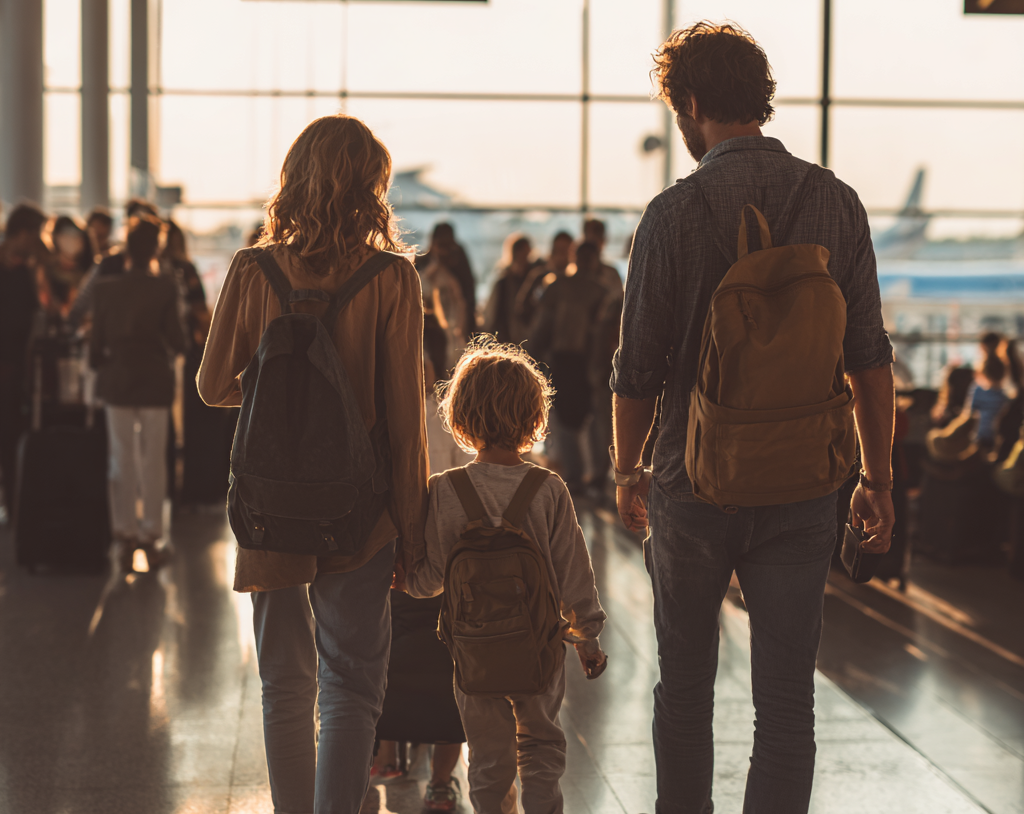The plane has landed, but the journey isn’t over. For families traveling internationally, long-haul flights can leave children tired, irritable, and overwhelmed, especially when navigating new environments. Managing the post-flight phase is just as important as preparing for takeoff. One tool that helps make the transition smoother is the eSIM—a digital SIM card that offers instant connectivity upon arrival. From booking transportation to finding nearby food or kid-friendly attractions, staying connected helps keep everyone calm and cared for.
This guide explores how to keep children content and comfortable after landing, while highlighting how an embedded SIM can support seamless family travel.
Smooth the Airport Exit With Preparation
Once you land, aim to exit the airport with as little friction as possible. This means organizing documents, luggage tags, and local transportation in advance of arrival. Have a designated meeting point if you’re traveling in a group. Kids often grow restless in customs or baggage lines, so having quick snacks, coloring books, or interactive apps on hand helps pass the time.
Thanks to a data-ready digital SIM, you can use airport apps, ride-hailing services, or translation tools instantly—no need to hunt for Wi-Fi or a SIM card kiosk while juggling tired kids and luggage.
Help Kids Adjust to a New Environment
Children are sensitive to changes in climate, altitude, language, and time zone. After a long flight, they may feel disoriented or overstimulated. Ease the adjustment by creating familiarity—let them change into comfortable clothes, offer familiar snacks, and explain what’s next on the trip.
With your phone connected via eSIM, you can quickly access family-focused travel blogs, search for child-friendly parks, or check the weather forecast to better plan activities for the rest of the day.
Prioritize Rest, Even If It’s Not Bedtime
Jet lag affects kids just as much as adults. Depending on how far you’ve traveled, they might be ready for bed at noon or wide awake at midnight. If a nap is needed, make it short—around 30–45 minutes—to avoid disrupting their new sleep cycle.
Many parents use sleep apps or white noise to help kids wind down in new settings. These tools require stable connectivity, which a travel digital SIM provides without relying on hotel Wi-Fi or incurring roaming fees on your phone plan.
Fuel Up With Familiar Food Options
Hunger after flying is common, and unfamiliar food in a new place can make kids reluctant to eat. If possible, stop at a grocery store or café with simple, recognizable meals. Pack a few backup snacks from home for picky eaters until they warm up to the local cuisine.

An embedded SIM allows you to use food delivery apps or search for nearby restaurants based on your dietary needs or child-friendly menus. It removes the guesswork, especially when signs are in a different language or you’re unfamiliar with the area.
Engage in Light, Local Activities
The best way to settle into a destination is to ease into exploration. Take a short walk in a nearby park, visit a small museum, or stroll through the local markets. These experiences offer stimulation without being overwhelming, helping your child transition more gently into their holiday mindset.
Stay connected with your virtual SIM to track maps, find kid-friendly locations, and monitor opening hours in real-time. This way, you’re never stuck outside a closed attraction or wandering in circles with restless kids.
Kids thrive on routine—even during holidays. After a long flight, sticking to a loose version of their usual bedtime, meal times, and activity breaks helps them feel secure. Utilize digital calendars, alarms, or reminder apps to maintain a structured routine.
With a travel digital SIM, these tools work reliably anywhere. You won’t need to rely on hotel Wi-Fi to maintain your routine or access synced calendars across devices when traveling as a family.
Let Kids Feel Included in the Trip
Once the post-flight chaos settles, involve your children in choosing what comes next. Show them pictures of the destination, let them pick between two activities, or ask what food they’d like to try tomorrow. Feeling included makes them more cooperative and excited.
Use your connected phone to look up short videos, destination highlights, or child-friendly itineraries. A virtual SIM ensures this access is quick, secure, and available upon arrival, without the need to connect to Wi-Fi or search for SIM vendors in a new country.
Conclusion
Landing after a long flight marks the start of the real adventure—but it also requires care, patience, and a bit of strategy to keep children happy and grounded. From adjusting to a new time zone to finding food, rest, and fun, post-flight moments shape how the trip begins.
With an eSIM, parents can manage those first few hours smoothly, accessing everything from maps and meals to sleep aids and entertainment—all from their device. It’s a small upgrade with big benefits, helping families focus less on logistics and more on enjoying the holiday together.
Related



